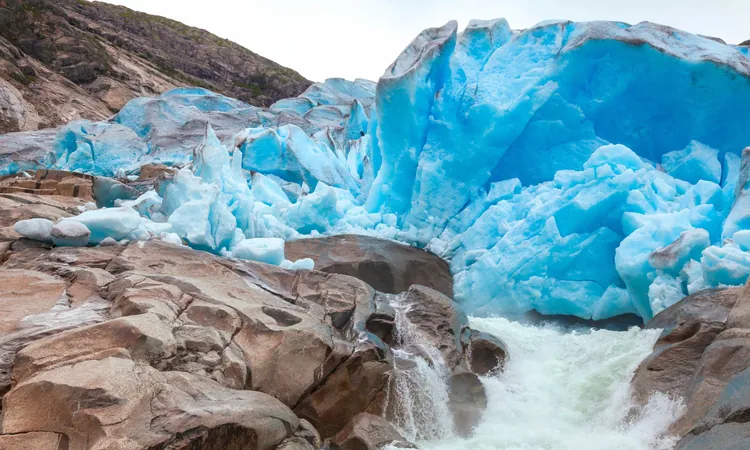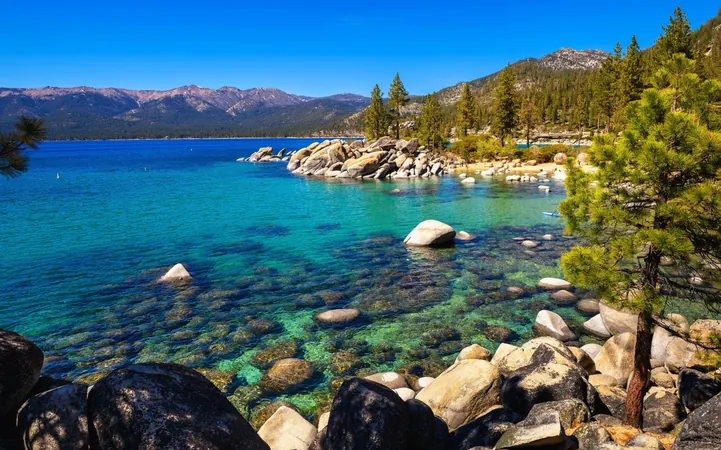
Unlocking Glacial Secrets: How Melting Ice Reveals Our Pollution Legacy
2025-05-08
Author: Arjun
Glaciers as Time Capsules of Pollution
Have you ever considered glaciers as ancient vaults of atmospheric history? These massive ice bodies collect and preserve pollutants like carbon within their frosty layers for decades, even centuries! Recent research dives into this chilling narrative, offering us a surprising glimpse into human impact on our planet's air.
Discovering the Impact of Human Activity
Led by Amy Holt from the University of Alaska Southeast, a team of intrepid researchers has been sampling meltwater from ten glaciers across the globe, including Alaska, Switzerland, Kyrgyzstan, and Ecuador. Their findings reveal that these icy landscapes are not just a pretty sight; they act as critical indicators of human-induced carbon emissions.
Glaciers: Natural Observatories of Carbon Sources
Each studied glacier revealed meltwater rich in dissolved organic materials, notably black carbon—residue from fires and fossil fuel combustion. Unlike forests or fields, which can distort carbon deposits through soil and vegetation, glaciers provide a clear picture of what carbon enters from the atmosphere.
Decoding Carbon’s Origins
The researchers discovered that carbon enters glaciers through various channels. Some samples exhibited signatures of ancient carbon, indicative of fossil fuel usage, while others hinted at more contemporary sources, such as biomass burning. By analyzing radiocarbon ages, the team could ascertain the origins and impacts of these carbon contributions.
A Geographic Tale of Carbon Variations
Intriguingly, the research found distinct variations among glaciers. Alaskan glaciers were found to contain higher levels of fossil-fuel-derived carbon, while Ecuadorian ice harbored a greater proportion of carbon resulting from wildfires and microbial activity. This discrepancy underscored the influence of local pollution sources.
The Hidden Journey of Carbon
Anthropogenic carbon constituted between 12% and a staggering 91% of total carbon in glacier outflows, varying with geographical and atmospheric conditions. Soot and other particles do more than just darken glacial surfaces; they also find their way into downstream ecosystems, potentially affecting food chains and water quality.
Why Chemical Changes Matter
The study illustrated how the chemical landscape of glacier outflows shifts with fossil fuel dominance, impacting how carbon is utilized in aquatic environments. Some compounds linger in streams, while others break down swiftly—a crucial factor in nutrient dynamics in downstream habitats.
A Chaotic Cycle of Carbon
These findings enrich our understanding of biogeochemical cycles—how elements like carbon circulate through both living and nonliving realms of Earth. Even distant, high-altitude glaciers are falling victim to human influence, with ancient carbon now entering river systems as ice melts.
Local Impacts on Communities
For many communities, glacial meltwater is a lifeline for drinking, farming, and energy. Alterations in the chemistry of this vital resource can harbor unforeseen pollutants that affect local fish and wildlife, disrupting food webs and natural ecosystems.
Future Glacial Outlooks
As global temperatures rise, the rapid retreat of glaciers implies accelerating meltwater rates, potentially amplifying anthropogenic carbon influx into rivers. With consistent industrial emissions, these icy archives may experience further transformations in their carbon profiles.
Looking to the Future of Glacial Studies
Researchers aim to expand these investigations into additional mountain ranges, aspiring to unravel whether distant glaciers reflect similar pollution patterns or remain pristine. Understanding the fate of dissolved carbon once it rejoins the waterways is crucial for mapping our environmental impact.
Concluding Thoughts
This research, published in the journal Global Biogeochemical Cycles, shines a stark spotlight on how our energy choices resonate even in remote polar regions. Glaciers, often perceived as isolated and untouched, are in fact potent symbols of our global footprint—a chilling reminder of pollution's reach.





 Brasil (PT)
Brasil (PT)
 Canada (EN)
Canada (EN)
 Chile (ES)
Chile (ES)
 Česko (CS)
Česko (CS)
 대한민국 (KO)
대한민국 (KO)
 España (ES)
España (ES)
 France (FR)
France (FR)
 Hong Kong (EN)
Hong Kong (EN)
 Italia (IT)
Italia (IT)
 日本 (JA)
日本 (JA)
 Magyarország (HU)
Magyarország (HU)
 Norge (NO)
Norge (NO)
 Polska (PL)
Polska (PL)
 Schweiz (DE)
Schweiz (DE)
 Singapore (EN)
Singapore (EN)
 Sverige (SV)
Sverige (SV)
 Suomi (FI)
Suomi (FI)
 Türkiye (TR)
Türkiye (TR)
 الإمارات العربية المتحدة (AR)
الإمارات العربية المتحدة (AR)